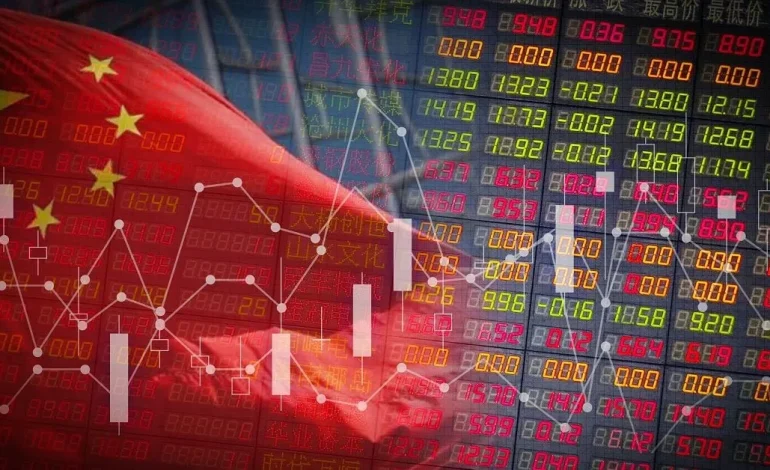China’s Stock Market Rebound: Tech Sector Leads 2025 Recovery

Introduction
China’s stock market has shown signs of a robust rebound in 2025, led by technology, electric vehicle, and AI-related companies. After a period of regulatory tightening and global trade uncertainties, investor confidence is returning, supported by government stimulus, corporate earnings growth, and innovation-driven sectors. The recovery reflects broader trends in China’s economy, including industrial upgrades, digital transformation, and strategic international partnerships.
Policy and Regulatory Support
Government policies have played a key role in stabilizing markets. The People’s Bank of China introduced targeted liquidity measures, while the China Securities Regulatory Commission (CSRC) eased certain compliance requirements for high-tech companies. Supportive tax incentives and investment funds have further bolstered investor sentiment. These measures aim to encourage capital inflows into strategic sectors, including AI, semiconductors, renewable energy, and electric vehicles.
Key Measures
- Monetary Support: Liquidity injections to stabilize short-term market volatility.
- Equity Incentives: Tax benefits for institutional investors focusing on tech innovation.
- Industry Prioritization: Government guidance on funding sectors that align with digital transformation objectives.
Impact on Investors
Institutional investors have responded positively, increasing allocations to technology-focused ETFs and direct equities. Retail investors are also showing renewed interest in domestic stocks, particularly in high-growth companies that benefit from AI integration and EV adoption.
Market Performance Overview
In the first half of 2025, the Shanghai Composite Index rose by 12 percent, while the Shenzhen Component Index gained 14 percent. Technology stocks outperformed other sectors, with semiconductor, software, and EV-related equities showing double-digit gains. Electric vehicle manufacturers such as BYD and NIO contributed significantly to market optimism, supported by strong domestic sales and expanding exports to Europe.

Sectoral Contributions
- Technology: Alibaba, Tencent, and Huawei spin-offs drove index growth with record quarterly earnings.
- Electric Vehicles: BYD, NIO, and XPeng expanded market share in both domestic and European markets.
- Semiconductors: SMIC and other domestic chipmakers benefited from government subsidies and increasing domestic demand.
Investment Flows
Foreign portfolio investments into Chinese tech stocks rose by 18 percent compared to the previous quarter, indicating renewed international confidence in China’s innovation ecosystem. Domestic funds focused on high-tech sectors contributed an additional $5 billion in new investments.
Technology and Innovation Drivers
AI, cloud computing, and digital transformation have been significant drivers of the rebound. Alibaba Cloud and Tencent AI Labs launched new products and partnerships that have increased enterprise adoption of AI solutions. Semiconductor development, particularly in mid-tier logic and memory chips, continues to support tech sector growth. EV manufacturers leverage AI for battery management and autonomous driving features, strengthening both market performance and investor sentiment.
Enterprise Adoption
Businesses in logistics, manufacturing, and retail are increasingly adopting AI-driven analytics and cloud solutions. Predictive modeling and automation help companies improve efficiency, reduce operational costs, and enhance competitiveness.
Startup Ecosystem
The startup ecosystem has thrived as AI and tech adoption expand. Venture capital investment in AI-driven startups reached over $4 billion in 2025, signaling strong growth potential and contributing to stock market optimism.
Global and Regional Context
China’s market recovery occurs within a complex global economic landscape. Regional trade partnerships, Belt and Road Initiative projects, and cross-border technology collaboration strengthen the resilience of Chinese companies. Despite challenges from international regulations, domestic firms continue to expand exports, particularly in AI, semiconductors, and EVs. Regional markets benefit from Chinese technology solutions, including cloud infrastructure, fintech platforms, and industrial automation systems.
Comparative Analysis
- Chinese tech stocks have outperformed regional peers in South Korea and Japan in 2025, reflecting strong domestic demand and supportive policy measures.
- AI and EV sectors are driving regional supply chain integration, creating growth opportunities for cross-border industrial collaboration.
Strategic Implications
As Chinese companies expand overseas, they influence technology standards, investment flows, and industrial policy in regional markets. Strategic investment in AI and EV supply chains enhances both domestic competitiveness and regional influence.
Investment Outlook and Forecast
Analysts project continued growth in tech-related stocks for the remainder of 2025 and into 2026. Key drivers include sustained domestic demand, rising AI adoption, semiconductor development, and expanding EV exports. Investor confidence is also supported by government stimulus, financial market reforms, and improved corporate governance among listed tech firms.
Risk Considerations
- Regulatory changes may affect certain sectors, particularly technology platforms and fintech.
- Global economic volatility could influence foreign investment flows and export demand.
- Talent shortages in high-tech fields could slow production and innovation.
Growth Opportunities
- AI-driven productivity improvements in manufacturing, logistics, and services.
- Expansion of EV exports to Europe, the Middle East, and Southeast Asia.
- Development of modular finance frameworks to support cross-border investment in tech and infrastructure sectors.
Conclusion
China’s stock market rebound in 2025 is largely driven by technology, AI, and electric vehicle sectors. Policy support, corporate innovation, and strategic regional collaboration have created a favorable environment for investors and businesses. While challenges remain, including regulatory and global economic uncertainties, the growth trajectory is positive. The recovery highlights the integral role of innovation-driven sectors in strengthening China’s domestic economy and regional competitiveness, providing a model for sustained growth and strategic investment in high-tech industries.






